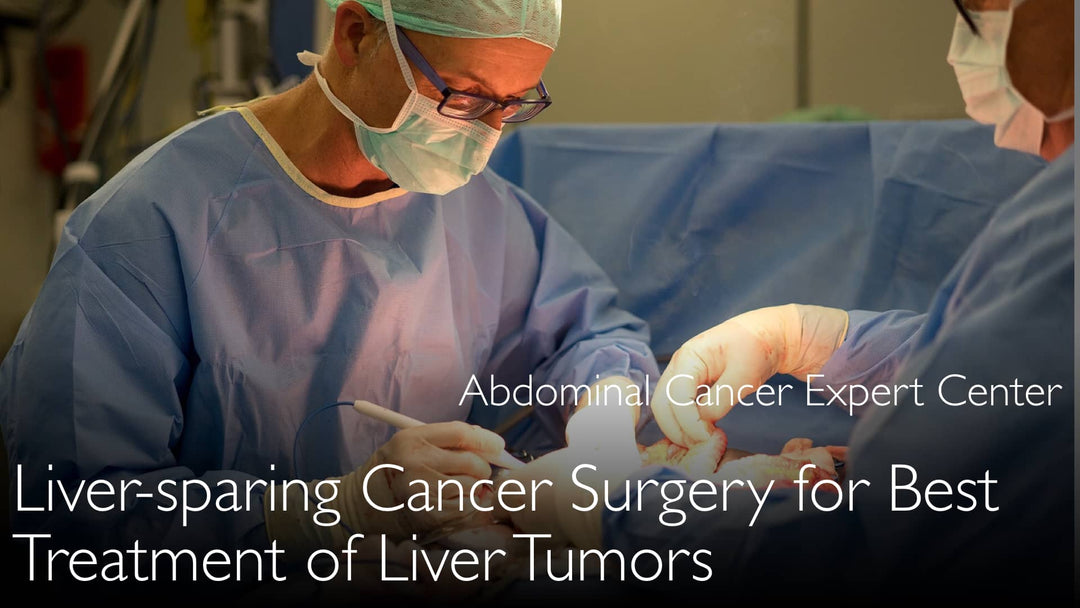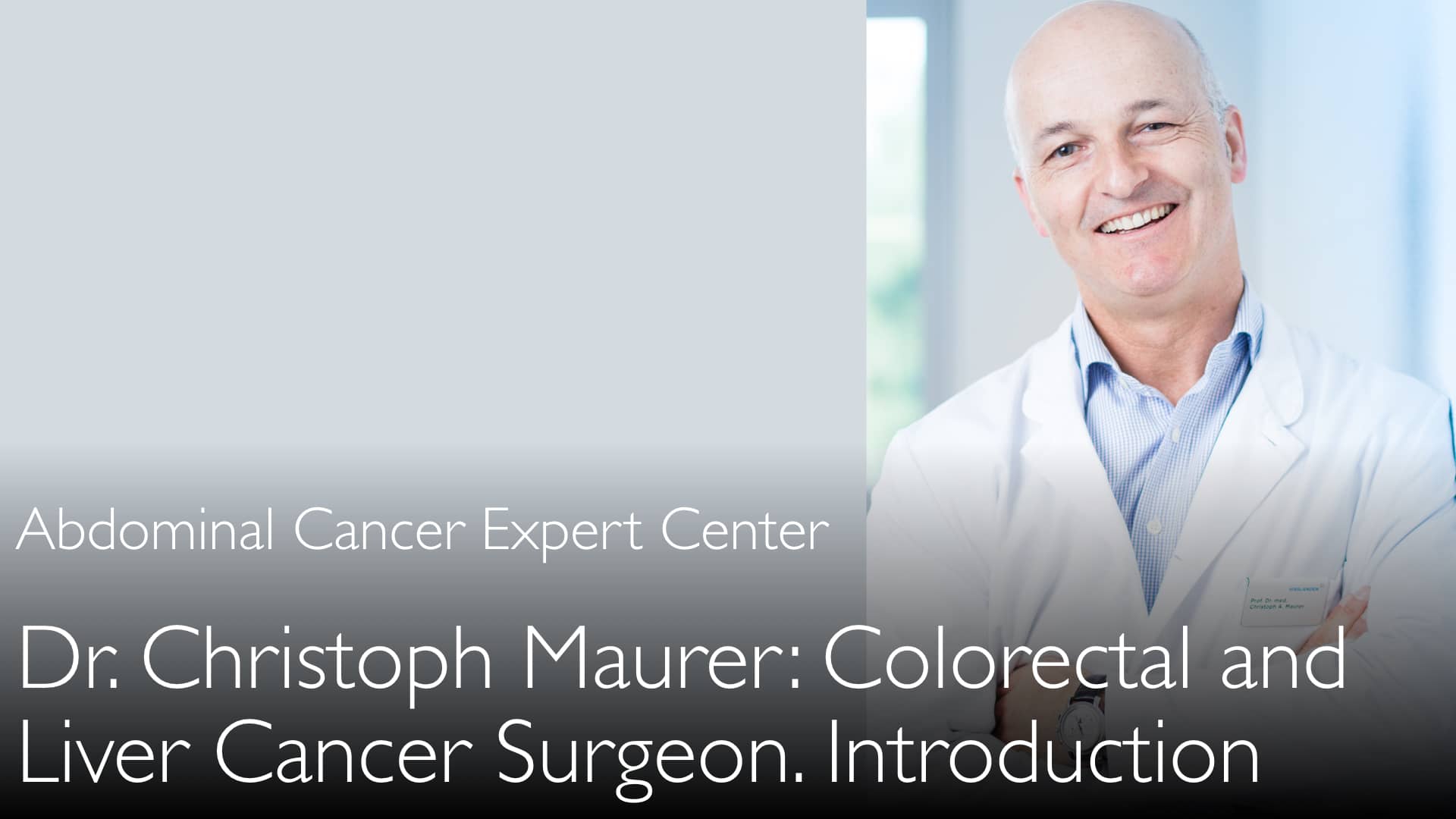מומחה מוביל בניתוחי סרטן הכבד, ד"ר כריסטוף מאורר, MD, מסביר על טכניקה ניתוחית לשימור הכבד. שיטה זו נמנעת מהפסקת זרימת הדם לכבד במהלך הסרת הגידול. טכניקת הניתוח בעדינות באמצעות סילון מים מפחיתה דימום ומונעת נזק לרקמת הכבד הבריאה. חולים חווים פחות סיבוכים והחלמה מהירה יותר. גישה זו חיונית לשימור תפקוד הכבד, במיוחד כאשר רק חלק קטן מהכבד נותר לאחר הניתוח.
ניתוח מתקדם לחיסכון בכבד לסרטן כבד ראשוני וגרורתי
קפיצה לפרק
- מטרת ניתוח לשימור כבד
- סיכוני צביטה כלי דם
- טכניקת חיתוך בזרם מים
- יתרונות חיתוך עדין
- מניעת אי-ספיקת כבד
- תמליל מלא
מטרת ניתוח לשימור כבד
כריתת כבד היא טיפול קריטי הן לסרטן כבד ראשוני והן לגידולים גרורתיים, כמו אלה מסרטן המעי הגס. ד"ר כריסטוף מאורר, MD, מדגיש שמטרה מרכזית של ניתוח מורכב זה היא לשמר רקמת כבד בריאה ככל האפשר. פילוסופיה זו של חיסכון בכבד היא מרכזית להשגת התוצאות הטובות ביותר עבור המטופלים. הגישה מתעדפת שמירה על תפקוד האיבר תוך הסרה מלאה של כל הנגעים הסרטניים.
סיכוני צביטה כלי דם
טכניקה נפוצה לשליטה בדימום במהלך ניתוח כבד היא צביטה כלי דם. ד"ר אנטון טיטוב, MD, דן כיצד הליך זה עוצר את זרימת הדם אל הכבד וממנו. עם זאת, ד"ר כריסטוף מאורר, MD, מסביר שאיסכמיה זו, או חוסר זרימת דם, גורמת נזק משמעותי לכבד. תפקוד האיבר נפגע במהלך הניתוח וממשיך להיות מופחת לאחריו. נזק היפוקסי זה לשארית הכבד הבריאה עלול להוביל לסיבוכים חמורים ולהחלמה איטית יותר עבור המטופל.
טכניקת חיתוך בזרם מים
ד"ר כריסטוף מאורר, MD, משתמש בחלופה ניתוחית קפדנית לצביטה: חיתוך עדין בזרם מים. טכניקה מתקדמת זו משתמשת בזרם מים בלחץ להפרדה זהירה של רקמת הכבד. מכשיר החיתוך בזרם מים פוגע בפרנכימת הכבד באופן מבוקר, מה שמבהיר את כלי הדם ואת צינורות המרה. נראות משופרת זו מאפשרת למנתח לקשור או להדק מבנים אלה במדויק ללא לחץ ועם אובדן דם מינימלי. ההליך אמין מאוד, אם כי ייתכן שייקח מעט יותר זמן לביצוע משיטות אחרות.
יתרונות חיתוך עדין
היתרונות של טכניקה זו ללא צביטה ובזרם מים הם משמעותיים להחלמת המטופל. ד"ר כריסטוף מאורר, MD, מדגיש כי הימנעות מאיסכמיה של רקמת הכבד היא יתרון מרכזי. שארית הכבד הבריאה נותרת ללא פגע, מה שמתורגם לפחות סיבוכים לאחר הניתוח. המטופלים חזקים יותר במהלך תקופת ההחלמה שלהם ולעיתים קרובות יכולים להשתחרר מהבית החולים מהר יותר. זה לא רק משפר את איכות החיים של המטופל אלא גם מפחית את העלויות הכוללות הקשורות לניתוח סרטן הכבד ולאשפוז.
מניעת אי-ספיקת כבד
גישה ניתוחית זו חשובה במיוחד כאשר למטופל יש שארית כבד קריטית. ד"ר אנטון טיטוב, MD, וד"ר כריסטוף מאורר, MD, דנים בתרחישים בהם רק 30% עד 35% מנפח הכבד המקורי נותר לאחר כריתת הגידול. שימור התפקוד של שארית קטנה זו הוא עניין של חיים ומוות. אי-ספיקת כבד היא סיבוך חמור ופוטנציאלית קטלני של ניתוח. על ידי שימוש בשיטת חיתוך עדינה הנמנעת מצביטה כלי דם, מנתחים מפחיתים משמעותית את הסיכון לאי-ספיקת כבד לאחר הניתוח ומגנים על המטופל מסכנה חמורה זו.
תמליל מלא
כריתת כבד לטיפול בגידולי כבד ראשוניים או גרורתיים היא חשובה. מהן אפשרויות הטיפול הטובות ביותר בסרטן הכבד? שימור כבד בריא ככל האפשר היא אחת ממטרות הטיפול.
ד"ר אנטון טיטוב, MD: הבה נמשיך לדבר על כריתת כבד. ניתוח סרטן הכבד נפוץ לכריתות גידולים גרורתיים, כמו גרורות סרטן המעי הגס. ניתוח סרטן הכבד גם מסיר גידולי כבד ראשוניים, כמו קרצינומה של תאי כבד. אבל הסיכון העיקרי של ניתוחים כירורגיים בכבד הוא דימום.
רוב המנתחים למעשה עוצרים את זרימת הדם אל הכבד וממנו. זה נקרא צביטה כלי דם. אבל אם מונעים זרימת דם לכל איבר, כולל הכבד, תפקוד האיבר נפגע. צביטת כלי דם מונעת זרימת דם, ותפקוד הכבד ממשיך להיפגע לאחר הניתוח.
פיתחת טכניקה ניתוחית מסוימת של כריתת סרטן הכבד ללא צביטה כלי דם. מהי טכניקת הניתוח שלך לסרטן הכבד? כיצד היא מועילה לחולים עם סרטן כבד ראשוני או גרורתי?
ד"ר כריסטוף מאורר, MD: אולי זה מעט מוגזם שאנחנו פיתחנו טכניקת סרטן כבד זו. אבל מה שאנחנו משתמשים הוא טכניקת חיתוך כבד מאוד זהירה. אנחנו משתמשים בחיתוך עדין בזרם מים של רקמת כבד להסרה זהירה של הגידול.
חיתוך בזרם מים הוא טכניקה שבה הפרנכימה של הכבד נפגעת, אבל זה גורם לך לראות בבירור את כלי הדם ואת צינורות המרה בכל מקטע כבד. לכן, אתה יכול לקשור כלי דם וצינורות מרה, או אתה יכול להדק אותם ללא לחץ וללא דימום.
זה נותן למנתח סרטן הכבד שליטה מאוד טובה במהלך הניתוח. זה הליך שלוקח מעט יותר זמן לביצוע. טכניקות חיתוך כבד אחרות מהירות יותר, אבל הן דורשות עצירת זרימת דם לכבד.
טכניקת ניתוח סרטן כבד זו אמינה מאוד. אתה יכול לראות את מבני הכבד מאוד טוב ולבצע חסימה של מבנים אלה באופן מאוד אמין. זה אולי גם הסיבה שבהליכי פיצול כבד רוב מנתחי הכבד משתמשים במכשיר החיתוך בזרם מים.
כיוון שמכשיר החיתוך בזרם מים מראה לך את מבני כלי הדם של הכבד מאוד יפה, אתה יכול לבצע את הליכי ניתוח סרטן הכבד שלך ללא סיכונים. לאחר הניתוח בכבד, יש לך אובדן דם קטן ונמנעת איסכמיה של רקמת כבד.
זה אומר שאין לך נזק היפוקסי לכבד הבריא הנותר. זה חשוב להחלמה לאחר ניתוח סרטן הכבד. יש פחות סיבוכים, מטופלים חזקים יותר במהלך ההחלמה, ומטופלים משתחררים הביתה מהר יותר. אז, בסופו של דבר, אתה גם חוסך בעלויות של ניתוח סרטן הכבד.
ד"ר אנטון טיטוב, MD: אז זה חשוב. טכניקת חיתוך כבד זהירה זו ללא עצירת זרימת דם משפרת את תפקוד הכבד לאחר הניתוח. זה גם משפר את איכות החיים של המטופל לאחר הניתוח. שיטת ניתוח סרטן הכבד ללא עצירת זרימת דם לכבד משפרת את תפקוד הכבד. הכבד מתפקד טוב יותר במהלך ולאחר הניתוח.
ד"ר כריסטוף מאורר, MD: בהחלט. עבורי, אחד הדברים החשובים ביותר הוא זה: לעיתים קרובות לאחר ניתוח יש לך שארית כבד קריטית של 30% או 35% מנפח הכבד הכולל לפני הניתוח. אז אתה מאוד שמח להשאיר שארית כבד בריאה זו ללא כל נזק.
אז אתה מסכן פחות אי-ספיקת כבד ופחות כשל כבד. כשל כבד לאחר ניתוח סרטן תמיד יש פוטנציאל למוות של המטופל.
ד"ר אנטון טיטוב, MD: זה מאוד חשוב שכל החולים עם סרטן הכבד יבינו לפני שהם בוחרים את מנתח הכבד שלהם.
ד"ר כריסטוף מאורר, MD: נכון.





